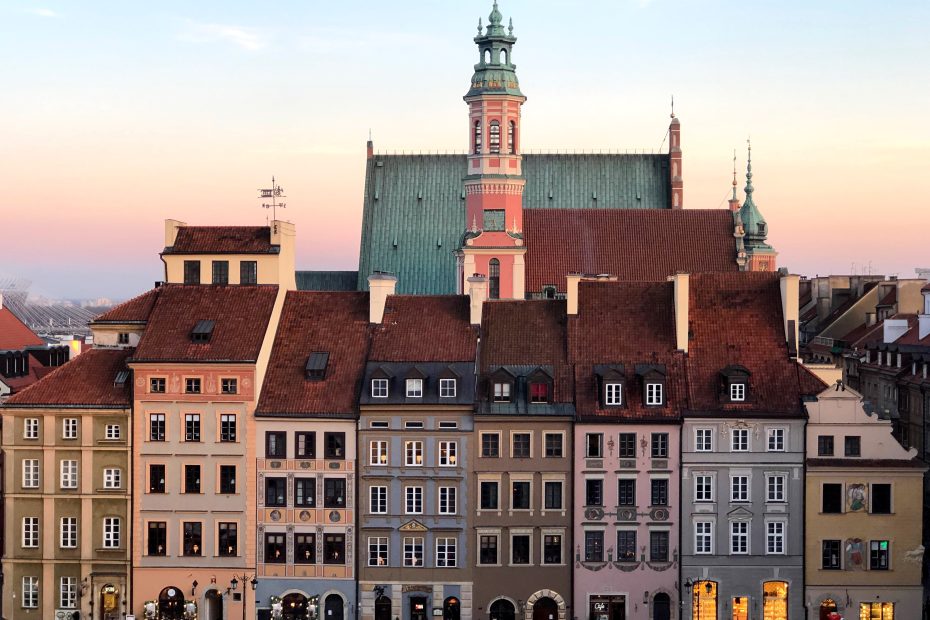Table of Contents
Introduction
Kraków, located in southern Poland, is a city steeped in history. Serving as Poland’s capital for centuries and its cultural heartbeat, Kraków’s Old Town is one of the best preserved medieval cities in Europe. Behind its charming facades and spires lies a complex past spanning over a thousand years. Exploring Kraków is like embarking on an enchanting journey back in time.
Early History
According to legend, Kraków was founded by the mythical ruler Krakus in the 8th century. Krakus established his stronghold on Wawel Hill, a limestone outcrop overlooking the Vistula River. Wawel soon became the seat of royal power, with a castle erected in the 11th century. As the city grew around Wawel, its strategic location between East and West made it an important center for trade.
Growth into a Major City
By the 14th century, Kraków had developed into the thriving capital of Poland under Casimir the Great. Grand palaces, churches, and monasteries were constructed as the city became an influential political and economic hub. The famous Cloth Hall was established as a center for international commerce. Kraków University, later known as Jagiellonian University, was founded in 1364 and is one of Europe’s oldest institutions of higher learning.
The Golden Age of the Renaissance
The 16th century marked Kraków’s Golden Age, when it reached the peak of its power and prestige under the rule of the Jagiellonian dynasty. This was a period of flourishing arts, architecture, and culture. Outstanding Gothic, Renaissance, and Baroque edifices were erected, including the magnificent St. Mary’s Basilica. As the royal residence, Kraków became a cosmopolitan center visited by artists, scholars, and merchants from across Europe.
Challenging Periods
Kraków’s position faltered in the 17th century with a devastating Swedish invasion known as the “Deluge” that left the city in ruins. Further decline continued with the Partitions of Poland in the late 18th century, when Kraków lost its status as an independent state. Much of its architectural heritage was preserved, however, even through subsequent occupations by Austria and later Nazi Germany during World War II.
World War II
The Nazi occupation of Kraków brought immense suffering and losses. An oppressive ghetto was established for the city’s Jewish population, with many later perishing at the Auschwitz-Birkenau death camp. Kraków endured massive destruction before its liberation in 1945.
Postwar Revival and Rebuilding
In the decades after World War II, painstaking reconstruction and restoration of Kraków’s historic core was undertaken. The splendid medieval Old Town regained its former glory, with the historic center designated a UNESCO World Heritage Site. Efforts continue to preserve Kraków’s architecture, artworks, and irreplaceable relics for future generations.
Modern Kraków
Today, Kraków beautifully balances its status as an epicenter of Polish heritage and culture with its cosmopolitan modern side. Millions of tourists are drawn annually to its intact medieval plazas and landmarks. Kraków is also an economic and technological hub, with a vibrant contemporary arts scene. Despite its growth, Kraków maintains its age-old magic.
Kraków’s UNESCO Sites
Two major complexes central to Kraków’s identity are recognized UNESCO World Heritage Sites – Wawel Hill, home to the Royal Castle and Gothic Cathedral; and the Old Town, boasting Europe’s largest medieval town square. These enduring icons reflect Kraków’s enduring prominence through the centuries.
Major Historic Attractions
Among Kraków’s treasures is the impressive Cloth Hall, a Renaissance arcade once housing medieval Europe’s biggest cloth trade. The awe-inspiring Gothic St. Mary’s Basilica, whose mismatched towers dominate the Main Square, contains magnificent 15th century wooden altarpieces.
Museums and Galleries
Kraków’s prestigious National Museum exhibits 20,000 priceless works. Equally moving is the Schindler’s Factory Museum, housed in Oskar Schindler’s former WWII industrial complex and documenting Kraków’s wartime tragedy. For modern art, the acclaimed MOCAK museum impresses with avant-garde collections in a converted warehouse.
Conclusion
The exceptional historic fabric of Kraków provides a direct link to its dramatic past – stories of glittering triumphs, periods of decline, destructive conflict, and determined rebirth. Wandering Kraków’s captivating Old Town and monuments is a poignant reminder of how this enduring city has preserved its heritage through the upheavals of history. With its remarkable spirit, Kraków continues to inspire visitors from across the globe.
FAQs
FAQ 1: What is Kraków best known for?
Kraków is best known for its remarkably well-preserved medieval core, which contains architectural treasures like the Main Market Square, Wawel Castle, and St. Mary’s Basilica. As Poland’s former capital and a major cultural center, it is revered for its beauty and historic significance.
FAQ 2: Why was Kraków named a UNESCO World Heritage Site?
Kraków earned this prestigious distinction due to phenomenal historic monuments that reflect its important role in European architecture, politics, culture, and spirituality over many centuries. UNESCO recognized Kraków’s Old Town and Wawel Hill as sites of outstanding universal value.
FAQ 3: What was the Nazi occupation of Kraków like during WWII?
The Nazi occupation beginning in 1939 brought immense suffering to Kraków. An oppressive ghetto was created for the Jewish population, with many later killed at concentration camps. Kraków endured heavy damage and looting before its liberation.
FAQ 4: How was Kraków rebuilt after WWII?
After the devastation of WWII, reconstruction efforts focused on preserving Kraków’s historic center. Damaged buildings were meticulously restored. Archaeological excavations unearthed elements of the medieval city. Kraków again emerged as a proud testament to Polish cultural heritage.
FAQ 5: Why do tourists still flock to Kraków today?
With its magical medieval squares, monumental architecture, museums, and lively culture, Kraków remains one of Europe’s most captivating destinations. Tourists come to immerse themselves in over a thousand years of history and experience Kraków’s enduring magnetism.
